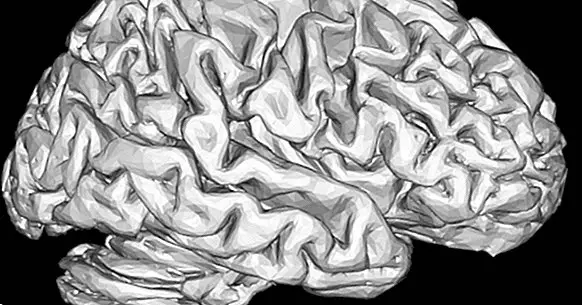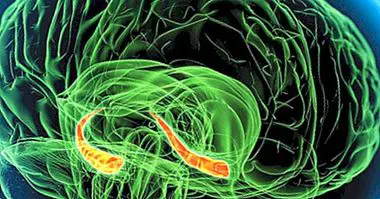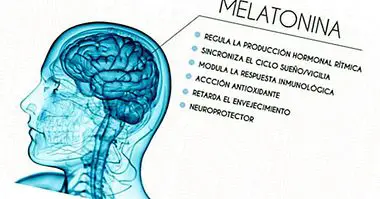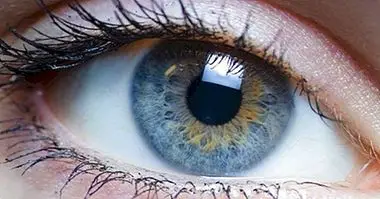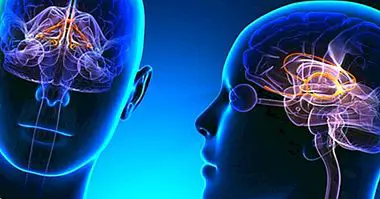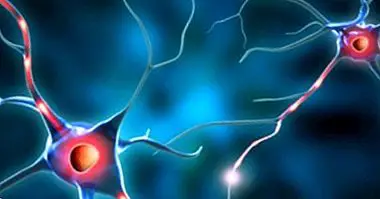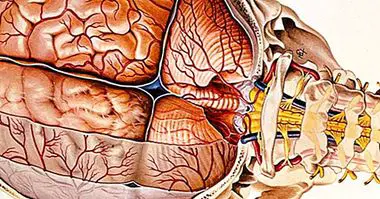The creative brain: where the genius resides
Creativity is a complex process which requires the activation of several brain areas. So far it is not entirely clear whether creativity requires a specific neuronal architecture or not. The research team of cognitive neuroscientist Roger Beaty at Harvard University seems to have found differences in the brains of highly creative people.
His investigations revealed three neural networks with strong connections involved in the creativity process in the parietal and prefrontal cortices. This study has begun to identify processes of controlled thinking and spontaneous ideas. Everything seems to indicate that creativity in a person could be predictable from the strength of their neural connections in these three networks.
- Related article: "The psychology of creativity and creative thinking"
Mapping the creative brain
According to this study, creativity or creative thinking would involve three different neural networks that would work at the same time. They are the following.
The default or default neural network
It is the one involved in the processes of imagination , in daydreaming or when our mind wanders without an object of attention. It is distributed in the medial zone of the temporal, parietal and prefrontal lobes. It seems that it could develop a fundamental role in the generation of ideas and in possible solutions for executing them.
The executive control network
It is linked to the evaluation of ideas in order to determine if they fit the creative objective. It is a set of regions that are activated when we need to control thought processes or focus our attention . Includes the anterior cingulate gyrus. It seems to provide important connections between the components of the attentional process.
The relevant neural network
This network acts as a mechanism of alternation between predetermined networks and those of executive control .
Keys to understanding creativity
It is possible for creative people to be able to activate these brain systems at the same time that normally do not work together. Although the keys to understanding the creativity process do not seem to be alone in large scale neural networks.
Our brain orders the stimuli that we receive through our senses in what we could call "information blocks". Each time we receive new information, new neural networks are created that are immediately related to the existing information. We create mental models from which we can easily extract the necessary information to resolve issues that may arise later.
The problem is that, although they are very useful for solving tasks without too many previous analyzes, some of these blocks become so rigid that they are very difficult to modify. Creativity basically what it does is challenge those rigid neural networks and give rise to creative and imaginative thinking.
The creative personality
Researchers such as Mayers or Taylor proposed certain features of the creative personality. The most creative individuals they employ divergent thinking , that is, several solutions to the same problem. They have an intrinsic motivation and tolerate ambiguity and risk better, instead of operating more automatically.
On the other hand, the creative subjects they are less interested in the practical aspects of life , usually enjoy a good sense of humor and respond better to disorder in general. Besides seeing things from the same point of view as other people, they also see them differently. They can work on several things at once and have great curiosity.
Are you born with it or can you train?
The latest research is yielding fascinating results in the process of creativity. Despite this, this question still has no answer. We begin to have an idea of the neurological basis of this process, and it seems that the creative brain is wired differently , but we still do not know why.
More research is needed in the future to determine if these neural networks are fixed or if you can train the mind to make it creative. From several sectors it is suggested that creative writing, art training or music could modify the neural connections. However, for now, the question remains open.
Author: Sonia Budner.

